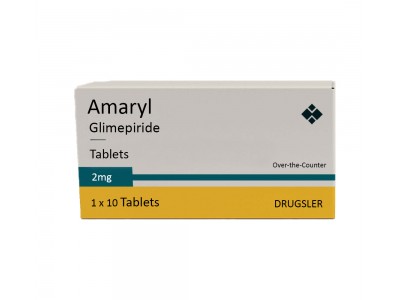Amaryl, also known as Glimepiride, is a medication commonly prescribed to manage type 2 diabetes by helping control blood sugar levels. But how long does it take for Amaryl to start working? This article explores the factors affecting the time it takes for Glimepiride to show noticeable effects and its general onset time.
What is Amaryl (Glimepiride)?
Amaryl is an oral medication used primarily to treat type 2 diabetes. It belongs to a class of drugs known as sulfonylureas, which work by stimulating the pancreas to produce more insulin. By enhancing the body's natural ability to regulate blood sugar, it helps individuals with type 2 diabetes manage their glucose levels more effectively.
How Long Does Amaryl Take to Start Working?
After taking Amaryl, its effects are usually noticed relatively quickly. For most people, it begins to lower blood sugar within 1 to 3 hours after ingestion. However, the full effects on blood sugar control can take several days of consistent use to become apparent. The time it takes to work can vary depending on the individual and their specific health conditions.
Factors That Affect the Onset of Glimepiride
Several factors can influence how fast Glimepiride starts working. These include:
- Dosage: Higher doses of Amaryl may lead to faster blood sugar reduction.
- Body Weight: People with higher body mass may experience slower effects.
- Diet and Exercise: The effects of Amaryl can be influenced by the person's lifestyle and how much physical activity they engage in.
- Other Medications: If a person is taking other diabetes medications, this can alter the onset time of Glimepiride.
How Fast Does Glimepiride Lower Blood Sugar?
Glimepiride is designed to work quickly. After ingestion, it can lower blood sugar within a few hours. However, the maximum effect of Amaryl generally occurs around 3 to 5 hours after taking the medication. This makes it an effective option for individuals looking for rapid control over their blood glucose levels.
Amaryl Dosage and Timing
Typically, Amaryl is taken once a day with the first meal. The dosage varies depending on the severity of diabetes and the individual’s response to the drug. Doctors often start patients on a lower dose and gradually increase it to minimize the risk of hypoglycemia.
Amaryl for Diabetes Type 2
Amaryl is often prescribed as part of a comprehensive treatment plan for diabetes type 2, which may also include diet modifications, exercise, and sometimes insulin therapy. It is crucial for patients to monitor their blood sugar regularly to determine how well the drug is working and make adjustments as necessary.
Amaryl Side Effects Onset
Like all medications, Amaryl can cause side effects. Some individuals may experience side effects soon after starting the drug, while others may not experience them for several days. Common side effects include low blood sugar (hypoglycemia), dizziness, nausea, and headaches. If any of these symptoms are severe or persistent, it is important to consult a healthcare provider.
How Soon Does Amaryl Start Working?
In most cases, Amaryl starts to lower blood sugar within a few hours of ingestion. However, the speed at which it works can depend on various factors such as the individual’s insulin resistance, the dosage, and whether it is taken in combination with other diabetes medications.
In conclusion, Amaryl begins working relatively quickly, with most individuals noticing its effects within 1-3 hours of taking the medication. However, consistent use over several days or weeks may be necessary to see optimal blood sugar control. It’s important for patients to follow their doctor's instructions and regularly monitor their blood glucose levels to ensure effective management of their diabetes.

